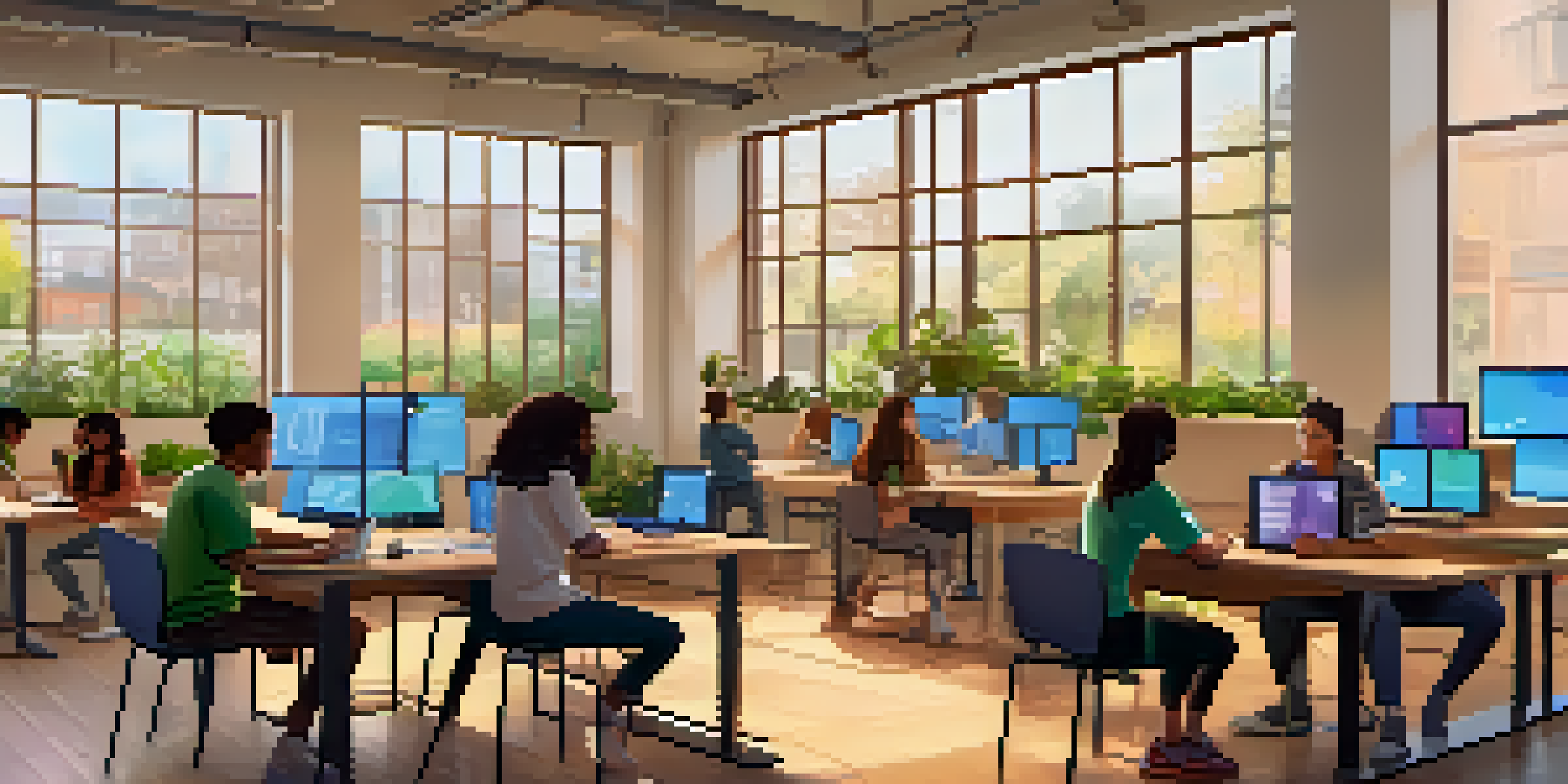The Role of Feedback in Digital Assessment Improvement

Understanding the Importance of Feedback in Assessments
Feedback serves as a guiding light in the often murky waters of digital assessments. It provides learners with insights into their performance, highlighting both strengths and areas for improvement. This process not only aids in skill development but also fosters a growth mindset, encouraging students to view challenges as opportunities for learning.
Feedback is the breakfast of champions.
Without feedback, assessments can feel like a one-way street, leaving students unsure of their progress. By integrating feedback, educators create a dialogue that enhances the learning experience. This two-way communication is essential for fostering an environment where students feel supported and motivated to improve.
Moreover, feedback helps in aligning educational goals with student capabilities, ensuring that assessments are not just a measure of learning but a tool for continuous improvement. When students receive constructive feedback, they are better equipped to take ownership of their learning journey.
Types of Feedback That Enhance Learning
There are several types of feedback that can significantly impact student learning. For instance, formative feedback is given during the learning process, allowing students to make adjustments before final assessments. This type of feedback is particularly beneficial as it encourages ongoing dialogue between students and educators.

Summative feedback, on the other hand, is provided after an assessment, offering a summary of performance. While it plays a crucial role in evaluating overall understanding, it often lacks the immediacy that formative feedback provides. Both types are essential, but their effectiveness can vary depending on when and how they are delivered.
Feedback Enhances Learning Experience
Integrating feedback creates a dialogue that helps students understand their performance and fosters a supportive learning environment.
Peer feedback also plays a pivotal role in the digital assessment landscape. When students review each other's work, they not only learn from their peers but also gain different perspectives, enriching their understanding of the subject matter.
How Feedback Fuels Continuous Improvement
Feedback is not just about pointing out flaws; it’s about sparking a cycle of continuous improvement. When students receive specific, actionable feedback, they can focus on what needs to be improved rather than getting lost in general comments. This targeted approach helps them make meaningful changes in their study habits and performance.
What is the shortest word in the English language that contains the letters: abcdef? Answer: feedback. That’s the breakfast of champions!
Additionally, feedback encourages self-reflection. When learners think critically about the feedback they receive, they can identify patterns in their work and better understand their learning processes. This self-awareness is a powerful catalyst for growth.
Moreover, continuous feedback loops create an adaptive learning environment. As students progress, they can adjust their goals based on the feedback received, ensuring that their learning journey remains relevant and effective.
The Role of Technology in Providing Feedback
In today’s digital age, technology plays a pivotal role in facilitating feedback. Online platforms can provide immediate responses, enabling students to see their results in real-time. This instant feedback can motivate learners to engage with the material more deeply and make timely adjustments.
Moreover, technology allows for personalized feedback at scale. With the use of data analytics, educators can track individual performance and tailor feedback to meet specific learning needs. This level of customization ensures that feedback is not only relevant but also impactful.
Types of Feedback Matter
Formative and summative feedback serve different purposes, with formative feedback encouraging ongoing improvement during the learning process.
Furthermore, the use of digital tools can enhance the feedback experience through multimedia elements. Videos, audio comments, and interactive quizzes can make feedback more engaging, helping students better understand the areas they need to work on.
Creating a Feedback Culture in Digital Learning Environments
Establishing a feedback culture within digital learning environments is essential for fostering student engagement. This culture encourages open communication, where students feel comfortable seeking feedback and sharing their thoughts. When feedback becomes a regular part of the learning process, it helps to normalize the experience of learning from mistakes.
Educators can promote this culture by modeling how to give and receive feedback effectively. By demonstrating vulnerability and openness to feedback, instructors set a powerful example for students. This encourages them to adopt a similar mindset, viewing feedback as a valuable tool rather than a punitive measure.
Additionally, creating opportunities for peer feedback can strengthen this culture. When students engage in collaborative learning, they not only learn from one another but also build a sense of community where feedback is embraced as a crucial part of growth.
Challenges in Implementing Effective Feedback
Despite its importance, implementing effective feedback in digital assessments can come with challenges. One major hurdle is the potential for feedback to be perceived as overwhelming or confusing. If students receive too much feedback at once, they may struggle to prioritize which areas to focus on for improvement.
Another challenge is ensuring that feedback is constructive and actionable. General comments like 'good job' or 'needs improvement' do not provide the specific guidance that students need to enhance their performance. Educators must strive to be clear and precise in their feedback to facilitate meaningful learning.
Technology Supports Timely Feedback
Digital tools enable immediate and personalized feedback, enhancing student engagement and understanding of their learning needs.
Finally, the reliance on technology can sometimes create barriers to effective feedback. If students lack access to the necessary tools or platforms, they may miss out on valuable insights that could aid their learning.
Measuring the Impact of Feedback on Learning Outcomes
Measuring the impact of feedback on learning outcomes is crucial for understanding its effectiveness. Educators can utilize various metrics, such as student performance data and engagement levels, to assess how feedback influences learning. By analyzing these metrics, they can identify trends and adapt their feedback strategies accordingly.
Additionally, qualitative feedback from students can provide insights into their perceptions of the feedback process. Surveys or focus groups can reveal how students feel about the feedback they receive and its impact on their learning journey. This information is invaluable for continuously refining feedback methods.

Ultimately, tracking the impact of feedback allows educators to validate their approaches and make data-driven decisions. This commitment to improvement not only enhances the learning experience but also ensures that assessments remain relevant and effective.